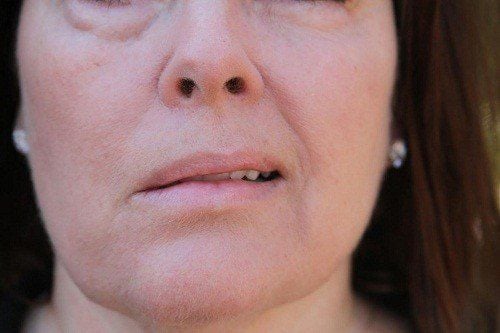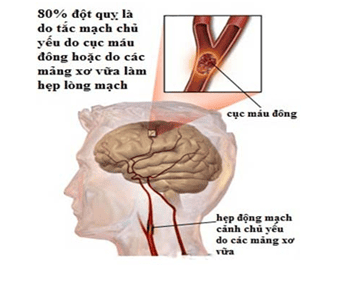This is an automatically translated article.
Gill fissure and gill cyst are congenital malformations in the lateral neck region. These are the most common head, neck and face surgery cases. The purpose of fissure surgery is to remove the entire fistula.
1. What is a bearing leak?
Gill fissure cyst and fissure fissure are congenital malformations in the lateral neck region. The cause of gill slit fistula is the abnormal development of the gill arches during the embryonic stage. The gill arch runs through many different organs and is located near nerves and blood vessels, so it is very complex.
The gill fistula surgery is indicated to remove the entire fistula. This is one of the most common head - face - neck surgery. In cases where the fistula is inflamed, the abscess is contraindicated for surgery.
The patient may have a fistula I, II, III or IV with the following features:
Gile fissure I: The fistula is usually short, runs across the parotid gland, and the outer end is in the paramaxillary region. the inner tip on the underside of the outer ear canal. Fistula of gill I is less likely to become infected than other routes. Surgery for fistula I need to be careful because it is easy to touch the seventh nerve causing facial paralysis. Gill fissure II: The outer end of the fistula is located one-third of the side of the neck, and the inner end is in contact with the tonsils - the lower pole. Fistula of gill fissure II often leaks salivary fluid, when detected requires immediate surgery. Fistula of gill fissure III: This fistula is the longest of the 4 fistulas with the lateral end located 1⁄3 between the lateral neck region, the fistula passing transversely into the carotid fork and to the base of the pleural cavity. Fistula of gill fissure III often leak saliva, when surgery must go from the bottom to the top and be careful when running across the carotid fork. IV gill fissure: This fistula is rarer and short, originates in the lower third of the lateral neck region and runs directly into the trachea. This fistula rarely leaks and is therefore less likely to be detected, however, surgery is easier.

Phẫu thuật rò khe mang được chỉ định nhằm lấy bỏ toàn bộ đường rò
2. Surgical procedure for the fistula of the gill slit I
The surgery for fistula fissure I includes the following steps:
Step 1: The patient lies on the maximum healthy side (under the shoulder with a pillow) on the operating table. The doctor administers general anesthesia. Step 2: The doctor standing on the side of surgery uses a knife to cut the skin along the parotid gland and peel off the skin flap to the front. Step 3: Dissect to reveal the posterior border of the parotid gland, the lower part of the ear canal cartilage, the anterior border of the sternocleidomastoid muscle, and the posterior ventral part of the biceps muscle. Step 4: Search the VII nerve trunk in the direction of the index finger and above the plane of the biceps muscle to continue to reveal the branches of the VII nerve. Step 5: Dissection runs along the gill fistula until it ends in the external ear canal, determines whether the fistula runs above or below or runs through the VII nerve branches, surgically removes the gill fistula but does not damage this VII nerve. Step 6: Stitch the hole in the fistula in the outer ear canal. Step 7: Place a closed drain, vacuum and close the skin.

Bác sĩ sẽ tiến hành gây mê toàn thân trước khi thực hiện phẫu thuật rò khe mang
3. Follow-up and care, complications and management after surgery for fistula I
Patients after surgery for gill fistula I are taken care of daily with aspiration, dressing and pressure dressing, after 48 hours, the drainage tube is removed, after 7 days can be sutured and need treatment to prevent inflammation and edema .
Some complications that may occur after surgery for cleft palate I are facial paralysis due to damaged VIIth nerve branches, bleeding, infected incision or Frey's syndrome.
In summary, gill fistula is a congenital malformation of the lateral neck that is indicated for surgical treatment to remove the entire fistula. The surgery should be performed at a medical facility with adequate equipment and skilled doctors to limit dangerous complications.
Currently, the ENT specialist - Vinmec International General Hospital is one of the prestigious addresses, trusted by a large number of customers in examining and treating common ENT diseases, tumors. head, face, neck, congenital malformations in the ENT region by common surgical methods such as surgery, microscopic or endoscopic tympanic patch, fistula removal, Bondy surgery, nasopharyngeal aerosol, injection Not only has a system of modern facilities and equipment, Vinmec is also a place to gather a team of experienced doctors and nurses who will greatly assist in the diagnosis. diagnose and detect early signs of abnormality of the patient's body. In particular, with a space designed according to 5-star hotel standards, Vinmec guarantees to bring patients the most comfort, friendliness and peace of mind during the examination and treatment at the Hospital.
Please dial HOTLINE for more information or register for an appointment HERE. Download MyVinmec app to make appointments faster and to manage your bookings easily.













